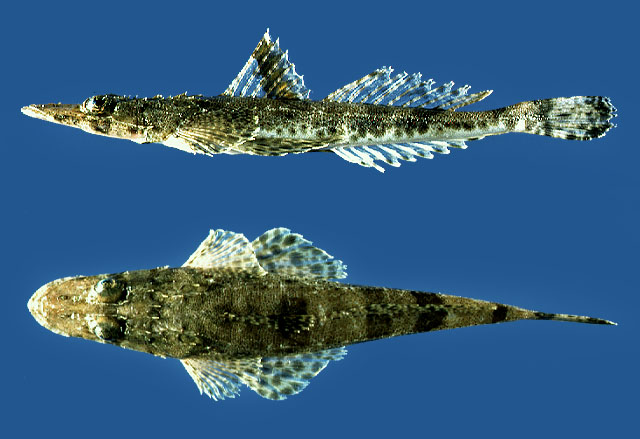| Platycephalidae (Flatheads) |
| 35 cm TL (male/unsexed) |
|
demersal; marine; depth range 79 - 261 m |
| North Western Pacific: East and South China seas; southern Japan, Korea, Taiwan, Hainan Island and northern Philippines. |
|
Dorsal spines (total): 10-10; Dorsal soft rays (total): 11-12; Anal spines: 0-0; Anal soft rays: 12-12. This species is distinguished by the following characters: 94-112 anteroventrally slanted oblique scale rows above lateral line; snout length 31.2-35.7% HL, markedly decreasing in length proportionally with growth; pectoral fin length 13.9-17.0% SL; pelvic fin length 19.5-23.1% SL; nasal bone without tubercles; dorsal surface of head and body dark brown, with small, round, dark-brown spots; and pelvic fin with small brown to black spots (Ref. 86254). |
| Taken by trawling at depths of 79 to 261m. Recorded by Galathea Station 539 as being dredged over gravel (Ref. 9790). |
|
Not Evaluated (N.E.) Ref. (130435)
|
| harmless |
Source and more info: www.fishbase.org. For personal, classroom, and other internal use only. Not for publication.

